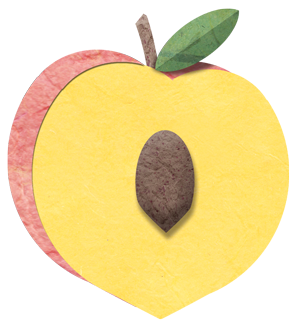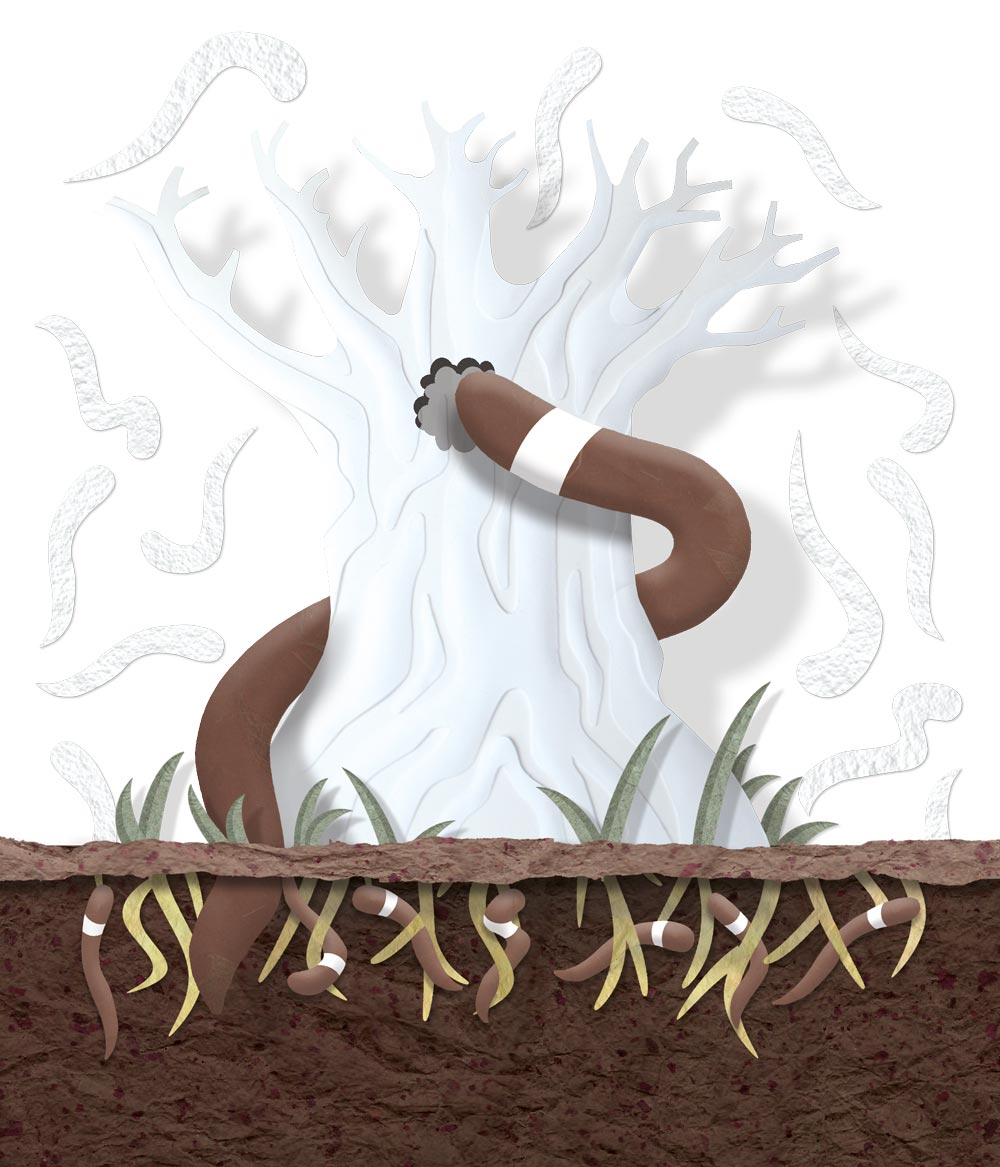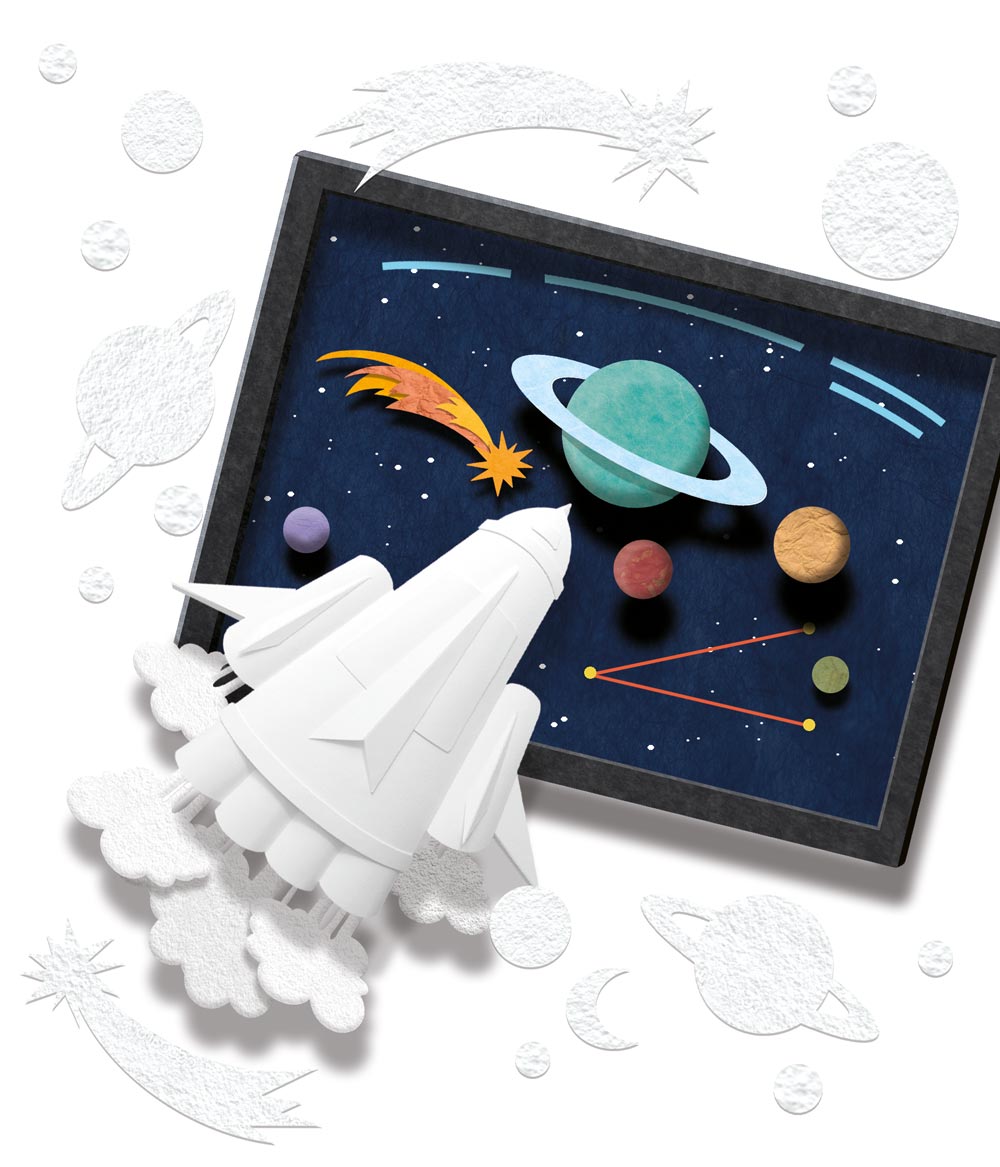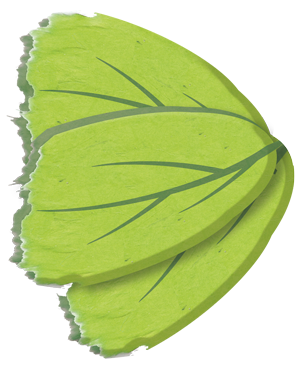Tina Fey and Amy Poehler.
Pierre and Marie Curie.
Steve Jobs and Steve Wozniak.
Sometimes the most amazing work comes from those who are willing to team up with others.
In a world where the problems we face are increasingly complex, from climate change to stamping out vexing diseases, collaboration may help us find better answers. Bringing many perspectives to big problems leads to better and more creative solutions.
At Colgate, professors are pairing up across departments to solve thorny environmental problems. They’re partnering with companies that can take great educational ideas from one campus to dozens. And they’re dreaming up the next big thing with funds that turn “wouldn’t it be cool if…” conversations into reality.
Here we share some of the ways that Colgate professors are joining forces.
The hidden side of all we eat
Food brings people together. At Colgate, that truth is about more than the simple draw of a great meal.
This past summer, with the help of the Kallgren Fund, eight professors traveled to several Midwestern cities to study food, community, and culture. Their target destinations? Local farmers’ markets and international agriculture companies, hunger-relief organizations and top-notch restaurants. When they returned, we asked them to share the highlights.
What made you want to go on this trip?

Chris Henke (sociology): I wanted to learn about new food groups and movements in U.S. cities. I’ve read about the rise of food justice — the idea that communities should be able to grow, sell, and eat healthy foods — in urban contexts, but hadn’t talked to people in these organizations.
April Baptiste (environmental studies): I was hoping to get a better understanding of GMOs, the role of urban farms, and the spaces that were experiencing food injustices. I was also interested in the agricultural tech side of food and wanted to learn about Monsanto firsthand.
Ben Anderson (economics): I was interested in gaining insight into the practical challenges and difficulties facing urban farmers as well as those working to resolve hunger issues in Midwestern cities.
Mark Stern (educational studies): I have an interest in gentrification and urban development. I had a hunch that farmers’ markets and foodie restaurants were a part of this narrative. I also wanted to know why I can’t not binge watch Diners, Drive-Ins and Dives whenever it’s on, despite sort of hating it.
Share a memorable moment with us.
Robert Nemes (history): The conversations we had with bakers, farmers, chefs, and others. For instance, we had a great talk with a bread maker in Detroit, who told us about how long it had taken him to master this craft. Now he can make dozens of different breads and was playing with ingredients (including Michigan beers) to create even more.
Antonio Barrera (history and Africana and Latin American studies): One larger highlight was seeing the differences between African Americans, Latinos, and whites working in farms, gardens, farmers’ markets, and restaurants. Their respective histories of slavery, dispossession, immigration, and privilege position each one of them in particular ways. Their histories provide them with different political, social, and cultural agendas. It is not that I did not know this before, but rather that this trip made it real.
What did you learn from others that you couldn’t have learned on your own?
Barrera: Chris, April, and Mark helped me understand better the complex relationship between industrial food production, human health, communities, and the environment. I was an apprentice on this trip.
Stern: We all tried to think about the responsibilities we might further accrue by having access and getting to know more about these issues and places. How did we just not take, parasitically, from the organizations and communities we visited with?
How will your experiences further your teaching or research?
Anderson: The trip to Monsanto was informative for my research because I learned more about the process of testing new seed and plant varieties by agricultural biotechnology firms.
Baptiste: I had my students do research projects on food issues in the cities that we visited — for example, the role of urban gardens as forms of environmental justice in Chicago and issues about food deserts and health in St. Louis and Detroit.
Professor Stern, did you discover the root of your Diners, Drive-Ins, and Dives obsession?
Stern: I’ve been a vegetarian for 17 years, and the show is basically about people eating meat. You do the math.

The great big impact of a lowly worm
 The problem: “Crazy worms” — an invasive group of earthworms from East Asia known for their high-energy slithering and prodigious appetites — can cause plenty of problems. They deplete the natural leaf litter in forests, change the levels of nitrogen and phosphorus in the soil, and chew up the roots of tiny seedlings. The impact on the ecosystems in which they thrive, including upstate New York, could be dramatic. When these earthworms drain the soil of its nutrients, forest plants and backyard plantings suffer.
The problem: “Crazy worms” — an invasive group of earthworms from East Asia known for their high-energy slithering and prodigious appetites — can cause plenty of problems. They deplete the natural leaf litter in forests, change the levels of nitrogen and phosphorus in the soil, and chew up the roots of tiny seedlings. The impact on the ecosystems in which they thrive, including upstate New York, could be dramatic. When these earthworms drain the soil of its nutrients, forest plants and backyard plantings suffer.
The brainpower: With funding from the Picker Interdisciplinary Science Institute, three professors — Damhnait McHugh (biology), Ahmet Ay (biology and mathematics), and Tim McCay (biology and environmental studies) — are trying to find out how quickly these destructive critters might spread.
The genesis of the idea: It all started with McCay, who has long been fascinated by the way that earthworms gobble up the plant material found on the forest floor. But what he really wanted to learn was how quickly they could spread — and understand the wider scope of their potentially destructive ways. “There were lot of disconnected pieces, but together, we had the expertise to tell a more cohesive story,” he said.
“When you work together, you realize you’re all using different vocabularies to ask and answer questions.”
Damhnait Mchugh, Biology professor
Putting the puzzle together: McHugh helps distinguish between similar-looking but genetically different types of worms; McCay looks at the worms’ natural history and how fast their populations can grow; Ay models the potential spread of the worms using mathematical modeling, based on numerous factors, over the course of decades. The work is in progress.
The big picture: For Ay, an expert in modeling biological regulatory networks, learning to create a model of an entirely different kind of system has opened up new ways to make an impact. “Ecological system modeling can help us make predictions to stop the spread of these earthworms,” he said.
The challenges and joys of collaboration: “When you work together, you realize you’re all using different vocabularies to ask and answer questions — we’re all struggling to understand and speak the other’s language,” McHugh said. “But over time, you become fluent. And the great thing is that our research students get to that fluency across disciplines, too. We’re building an interdisciplinary team.”

Move aside, space invaders
An ancient alien civilization has vanished. You — an intrepid young explorer with only a starter spaceship to your name — have stumbled across remnants of this society in your travels for your employer, The Corporation. If you don’t work fast, The Corporation is going to use technology that is reverse engineered from this advanced civilization for evil, not good. You are the only person who can stop The Corporation and save the galaxy. But do you have the brains to do it?
 That’s the idea behind At Play in the Cosmos, a video game created by authors Jeff Bary, associate professor of physics and astronomy, and Adam Frank from the University of Rochester, in collaboration with the Learning Games Network and the publishing company W.W. Norton. Unlike similar games, players don’t just use blasters to defeat the enemy. Instead, they might employ the Small Angle Formula Tool to identify an asteroid with enough iron to repair their spaceship or the Light Curve Tool to find habitable exoplanets.
That’s the idea behind At Play in the Cosmos, a video game created by authors Jeff Bary, associate professor of physics and astronomy, and Adam Frank from the University of Rochester, in collaboration with the Learning Games Network and the publishing company W.W. Norton. Unlike similar games, players don’t just use blasters to defeat the enemy. Instead, they might employ the Small Angle Formula Tool to identify an asteroid with enough iron to repair their spaceship or the Light Curve Tool to find habitable exoplanets.
That’s just the way that Bary imagined it. The game, designed to teach students introductory principles of astronomy, integrates different astrophysical concepts into the gameplay. The game is a teaching tool intended to familiarize students with interesting objects and phenomena that exist in the cosmos in a manner that extends beyond the traditional textbooks and problem sets. “We want to trick students into using a little bit of science,” joked Bary.
“We’re putting [the students] in the role of a scientist, and nothing could be more compelling from a [teaching] standpoint than that.”
Jeff Bary, Physics and astronomy professor
The collaboration has been eye opening for him. He’s had to help come up with clever but natural ways to integrate specific astrophysical concepts into the story’s larger narrative — and explain these elements with enough clarity that the game’s developers can turn the ideas into on-screen reality. “This kind of work can get really detailed, even though it’s designed for an introductory-level class,” Bary said. “The work has pushed me to think about areas of astronomy that are outside of my expertise, and it’s helped me think about the best ways to teach students.”
The game is currently being tested in several university courses across the country — including at Colgate — with a wider rollout expected this year. Bary sees significant promise in the approach. “Students may not realize it as they’re playing the game, but they’re mimicking exactly what astronomers do when they try to calculate the density of an asteroid, for example,” he said. “We’re putting them in the role of a scientist, and nothing could be more compelling from a [teaching] standpoint than that.”

They speak your language
On a Friday afternoon eight years ago, Japanese professor Yukari Hirata was giving a talk on campus about her research on verbal techniques that help people learn a second language. For audience member Spencer Kelly, a psychology and neuroscience professor who is an expert on the link between language and gestures, it felt like a light bulb moment.
Kelly and Hirata chatted after her talk, and soon they were collaborating on a project to see if the right combination of visual and auditory cues could benefit second-language learners even more. For example, they knew that Japanese language learners typically watch a speaker’s lips to understand the difference between short and long vowel sounds. But could hand gestures designed to show the distinction help these students learn faster and better?
The two launched a research project examining how adding specific gestures could enhance second-language learning. Their findings suggested such gestures didn’t improve language acquisition — but that discovery, made possible through funding from Colgate’s Picker Interdisciplinary Science Institute was more promising than it sounds.
“You discuss, you ask questions, you think … and you can end up with projects that no one in the world has ever thought about.”
Yukari Hirata, Japanese professor
For years, neuropsychologists have believed that gestures and speech are a thoroughly integrated system. Hirata and Spencer’s findings seemed to upend this previous research, suggesting that at the lower bounds of communication, like learning the novel sounds of a new language, a combination of speech and gestures don’t work in tandem. “Our research helped us identify the limits of this coupled system,” Kelly said. “The two systems are still integrated, but there are boundaries in that relationship.”
The two have continued their work, which has earned them a $316,000 National Science Foundation grant to help launch Colgate’s new Center for Language and Brain. The center is exploring foreign language instruction and learning — a critical topic, given that we live in an increasingly multilingual world. The center’s work, in which Hirata and Kelly both participate, explores topics ranging from how language changes the way we experience the world and how language learning gets more challenging as an adult. Their work has also led to a more personal connection: the two married in 2013.
For Hirata, the joy of collaborative research has come from exploring questions and taking them as far as they can go. “When you work with someone else on a problem, you discuss, you ask questions, you think,” she said, “and you can end up with projects that no one in the world has ever thought about.”
Opening up new research frontiers
 The work that scientists have done in the hard sciences over the course of centuries can lead to some frustrating situations for today’s researchers. “In general, scientists today learn more and more about a very small area,” explained Daniel Schult, Charles G. Hetherington Professor of mathematics and director of Colgate’s Picker Interdisciplinary Science Institute (ISI).
The work that scientists have done in the hard sciences over the course of centuries can lead to some frustrating situations for today’s researchers. “In general, scientists today learn more and more about a very small area,” explained Daniel Schult, Charles G. Hetherington Professor of mathematics and director of Colgate’s Picker Interdisciplinary Science Institute (ISI).
But it turns out there are still many places within the sciences that offer an almost Wild West sense of opportunity. The map is often wide open at the intersections of multiple disciplines — where environmental studies and chemistry and mathematics meet, for example.
“Interdisciplinary work expands the number and kinds of questions we can ask. There’s a real payoff when you can address questions that require more than one discipline to answer.”
Daniel Schult, Charles G. Hetherington Professor of mathematics and director of the Picker Interdisciplinary Science Institute
The Picker ISI, named for Harvey Picker ’36 and now in its 11th year, nurtures these collaborations. It provides seed funding to launch promising research projects, and has awarded more than $2 million to set them aloft. Many grow beyond this initial funding. For example, a Picker ISI–funded project examining the conservation of Ethiopian sacred forests, conducted by professors in religion, geography, and biology, was recently awarded a $500,000 National Science Foundation grant to further the work.
For Schult, the success is heartening. “Interdisciplinary work expands the number and kinds of questions we can ask,” he said. “There’s a real payoff when you can address questions that require more than one discipline to answer.”

Around the world with Kallgren
Plenty of collaborative work happens right at Colgate, but sometimes going beyond campus is the catalyst that ignites entirely new ideas.
The Kallgren Fund fosters such work by sending groups of faculty on travel around the world, explained Nicole Simpson, associate dean of the faculty for international initiatives. “When professors travel together, it leads to all sorts of conversations that might not happen in more formal settings,” she said. “Kallgren provides that initial spark to collaborate and learn about one another’s work and perspectives.”
Groups have traveled to India, Uzbekistan, and Hong Kong, among other locations. And in the end, the professors who participated aren’t the only ones who benefit, because they “often incorporate the work into their classrooms or find ways to take their students on similar trips,” Simpson said. “It helps the faculty not just as scholars, but also as teachers.”
The fund was established by Carl A. Kallgren, a former dean of the college.

